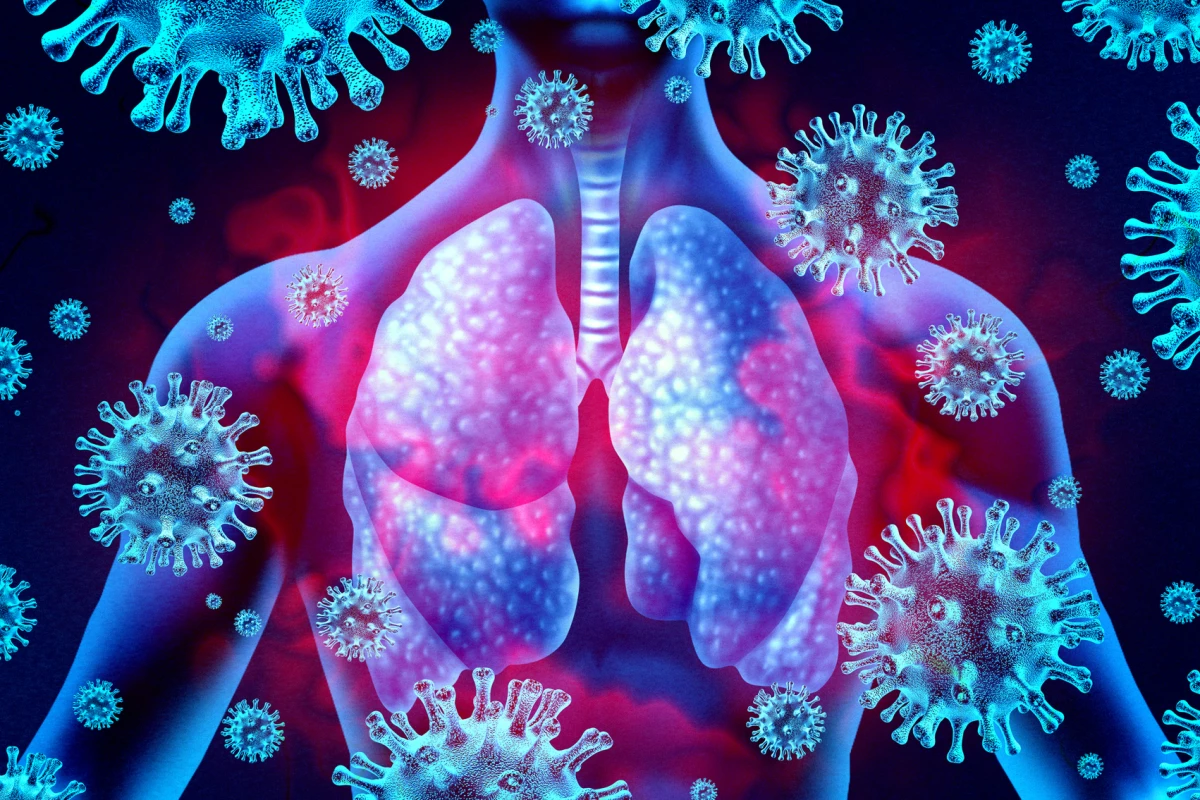Researchers have developed an inhalable RNA-based drug that targets the overactive white blood cells that cause lung damage during severe infection, reducing inflammation and scarring. With human clinical trials expected next year, the drug may soon be available as a novel treatment for COVID complications and pneumonia.
Macrophages, a type of white blood cell, play a critical role in initiating, maintaining and resolving inflammation in the body. When lung cells are destroyed by infection or the inhalation of toxic substances, lung macrophages trigger a massive immune response that itself causes further lung damage.
Now, researchers from the Technical University of Munich have developed an RNA-based treatment that targets overactive macrophages in the lung, preventing severe inflammation and lung tissue scarring, otherwise known as fibrosis.
RCS-21, the active substance that forms the basis of their treatment, inhibits the activity of the molecule microRNA 21 (miR-21), a known trigger for producing overactive macrophages in severe lung infections. MicroRNAs are a class of small, regulatory RNAs that have been shown to regulate multiple cellular functions and play an important role in regulating gene expression. They’ve recently emerged as promising drug targets.
In developing the substance, the researchers looked to exploit a particular feature of macrophages: they possess sugar receptors that identify bacteria and fungi through complex sugar molecules on the invader's surface.
“We have determined in single-cell analyses that the corresponding sugar receptors are, on the one hand, among the most common receptors on macrophages,” said Stefan Engelhardt, corresponding author of the study. “On the other hand, the receptors are, in a sense, a unique feature of macrophages – they hardly occur anywhere else.”
So, the researchers coupled RCS-21 to a particular sugar molecule, trimannose, and administered it to mice with drug-induced lung damage via an inhaler so that it would effectively enter the lungs. They found that using trimannose ensured the drug was delivered to its intended target.
“When the drug was administered as a spray, macrophages took up the active ingredient significantly better than without sugar molecules,” said Christina Beck, lead author of the study. “In contrast, other cell types even outright exclude the molecule.”
The researchers observed that in the mice treated with RCS-21, miR-21 activity was reduced by more than half, and there was a significant reduction in lung inflammation and fibrosis compared to the control group mice.
They then tested the drug on human lung tissue infected with SARS-CoV-2, known to cause complications such as pneumonia and acute respiratory distress syndrome (ARDS), a life-threatening inflammatory condition where the lungs ‘stiffen’ and cause a reduction in blood oxygen. They found that RCS-21 also inhibited miR-21 activity in human tissue.
The researchers see potential in using the drug as a targeted treatment for lung disease.
“We were able to show that nucleic acid-based active substances can be used in a very targeted manner, at least in the lungs,” said Engelhardt. “This technology opens up a wide field for the development of novel RNA-based drugs. I expect a lot to happen in this area in the next few years.”
Studies to improve the drug's safety are underway, with the first human clinical trials slated for 2024.
The study was published in the journal Nature Communications.
Source: Technical University of Munich





